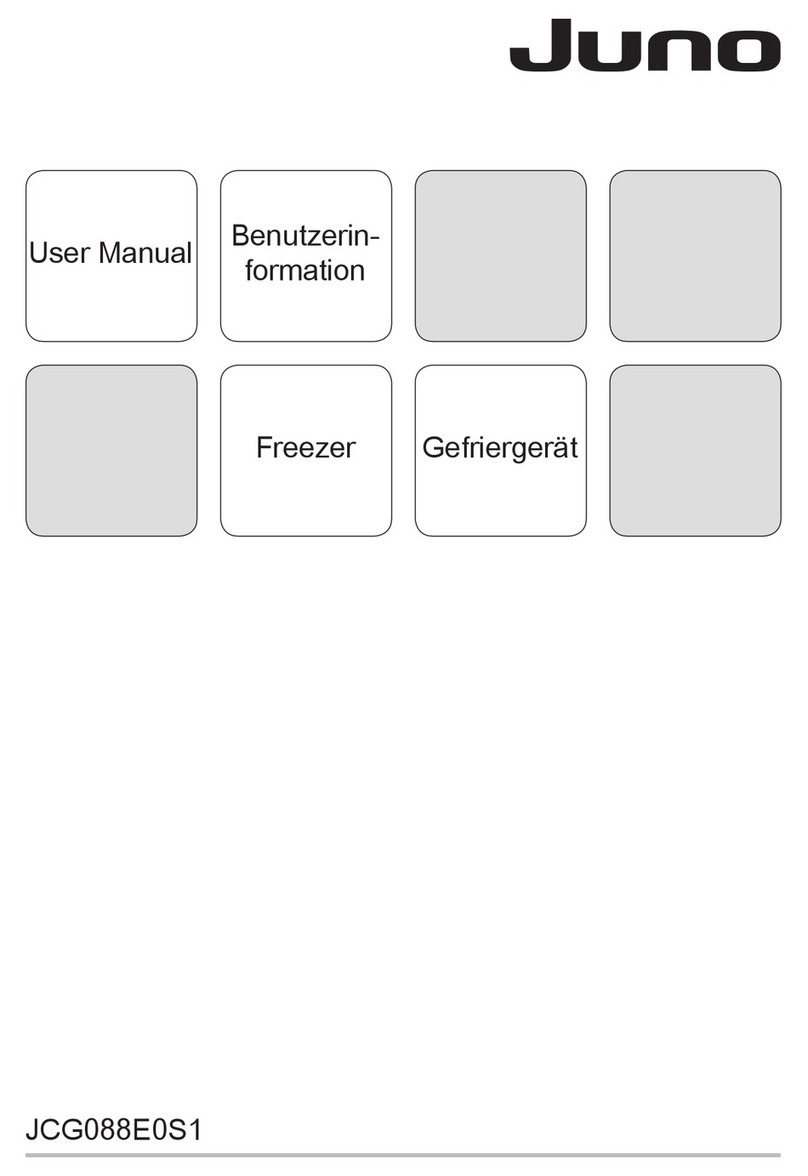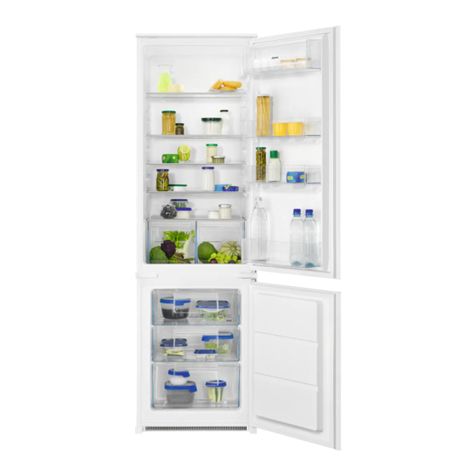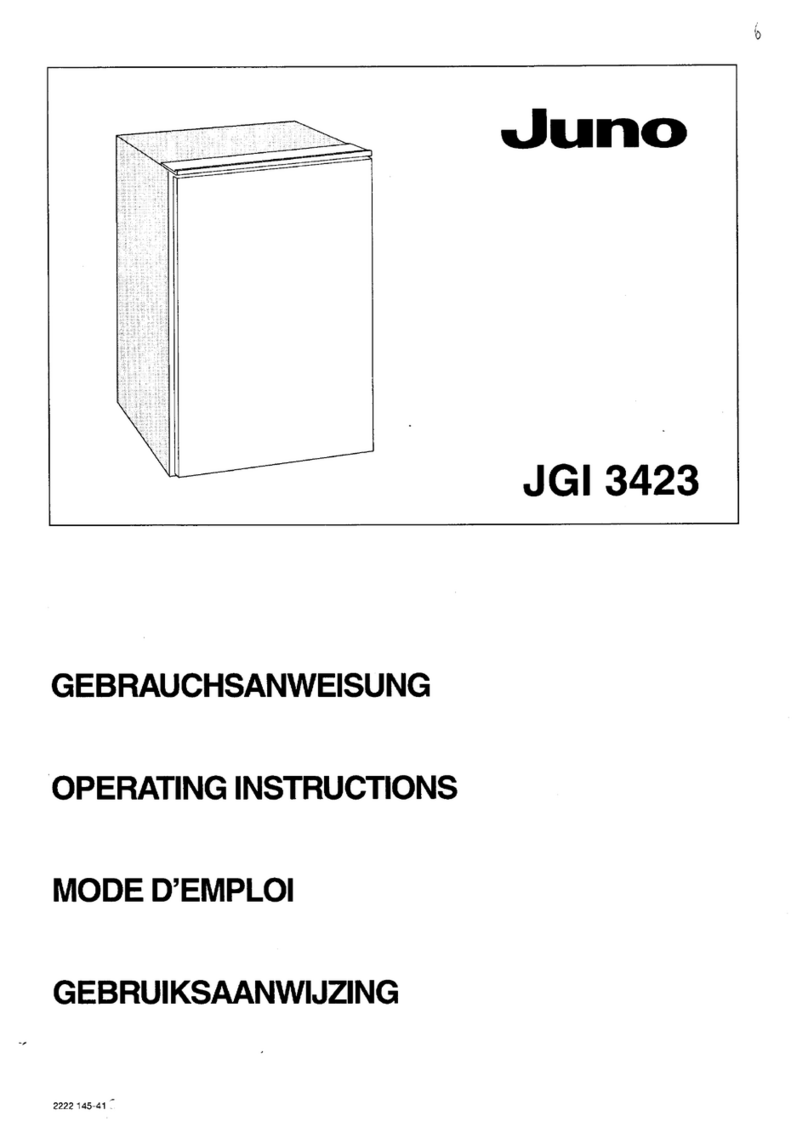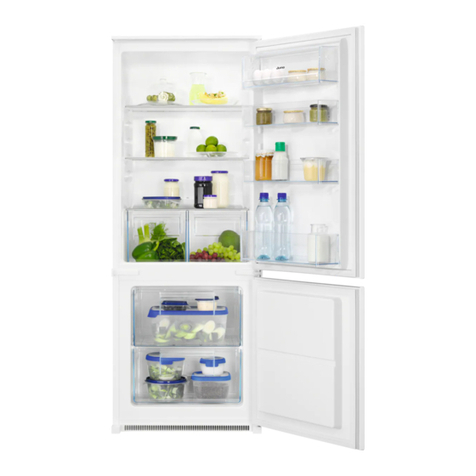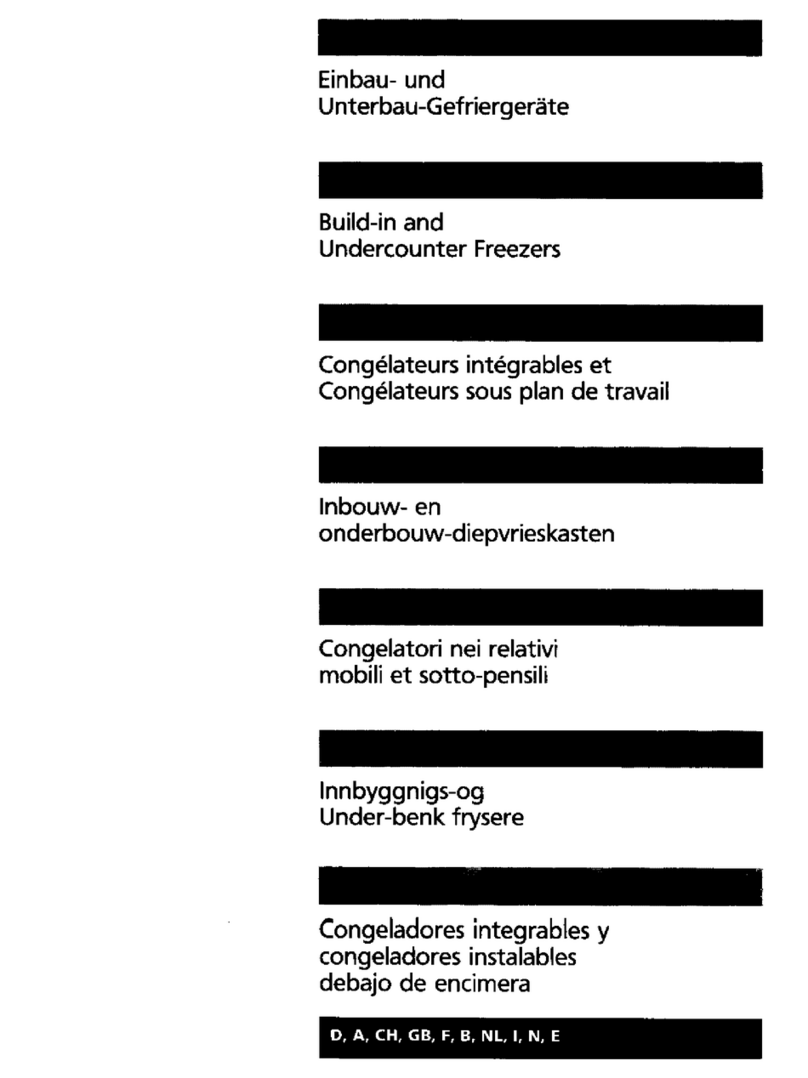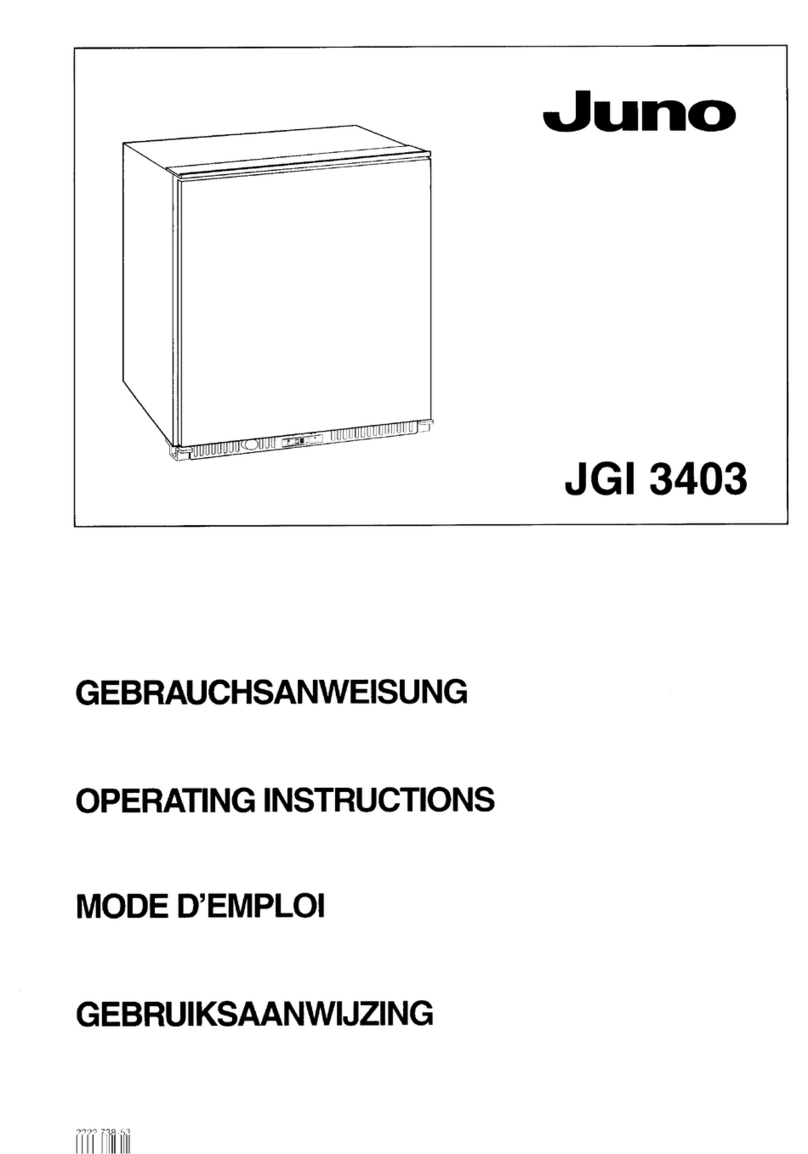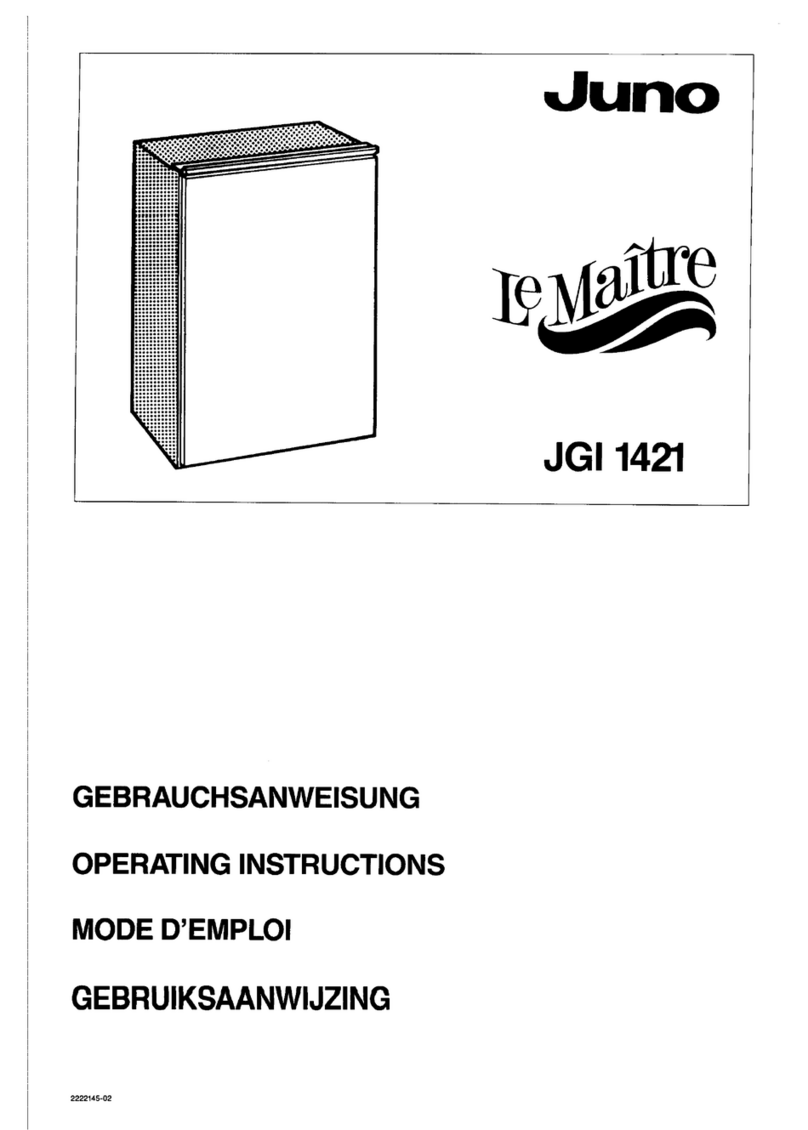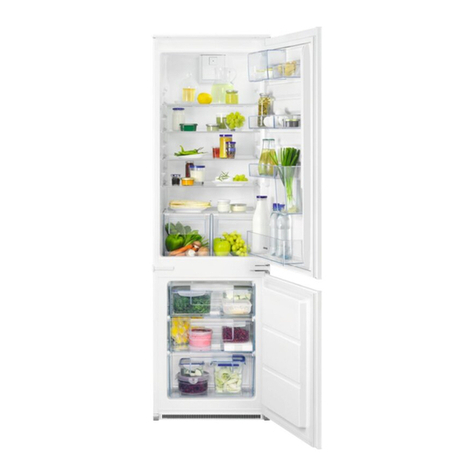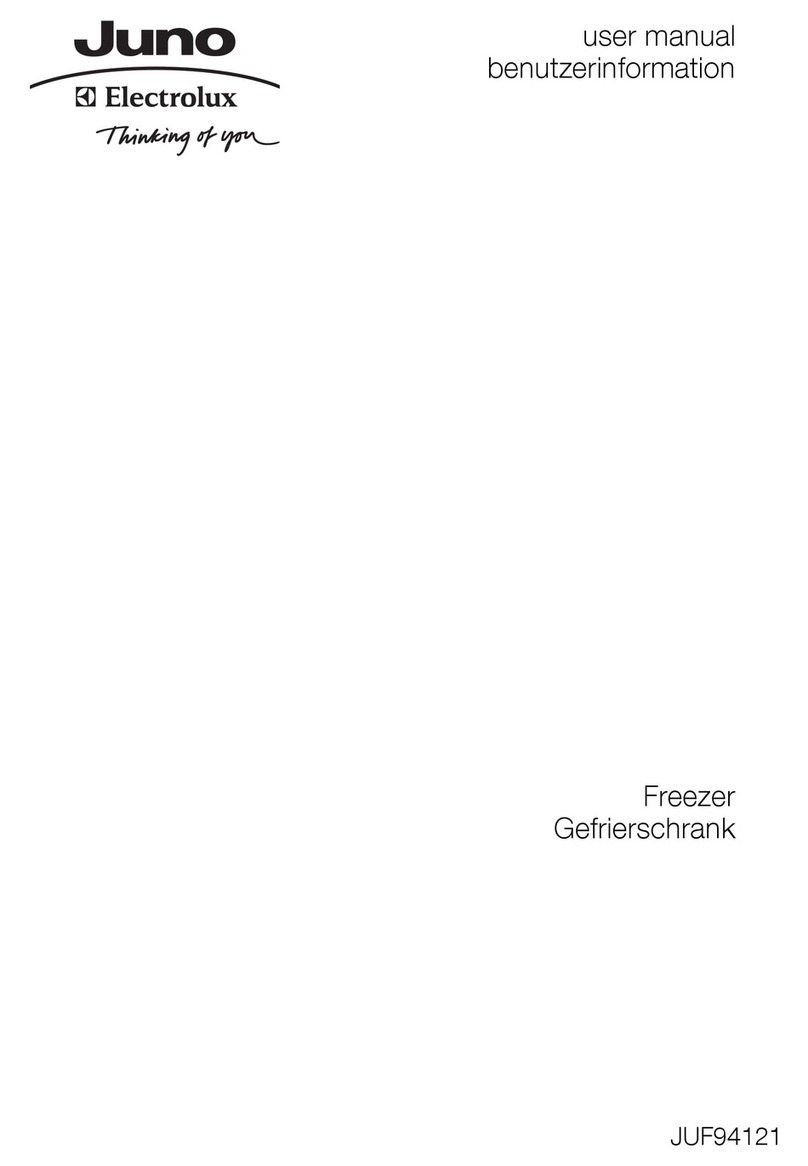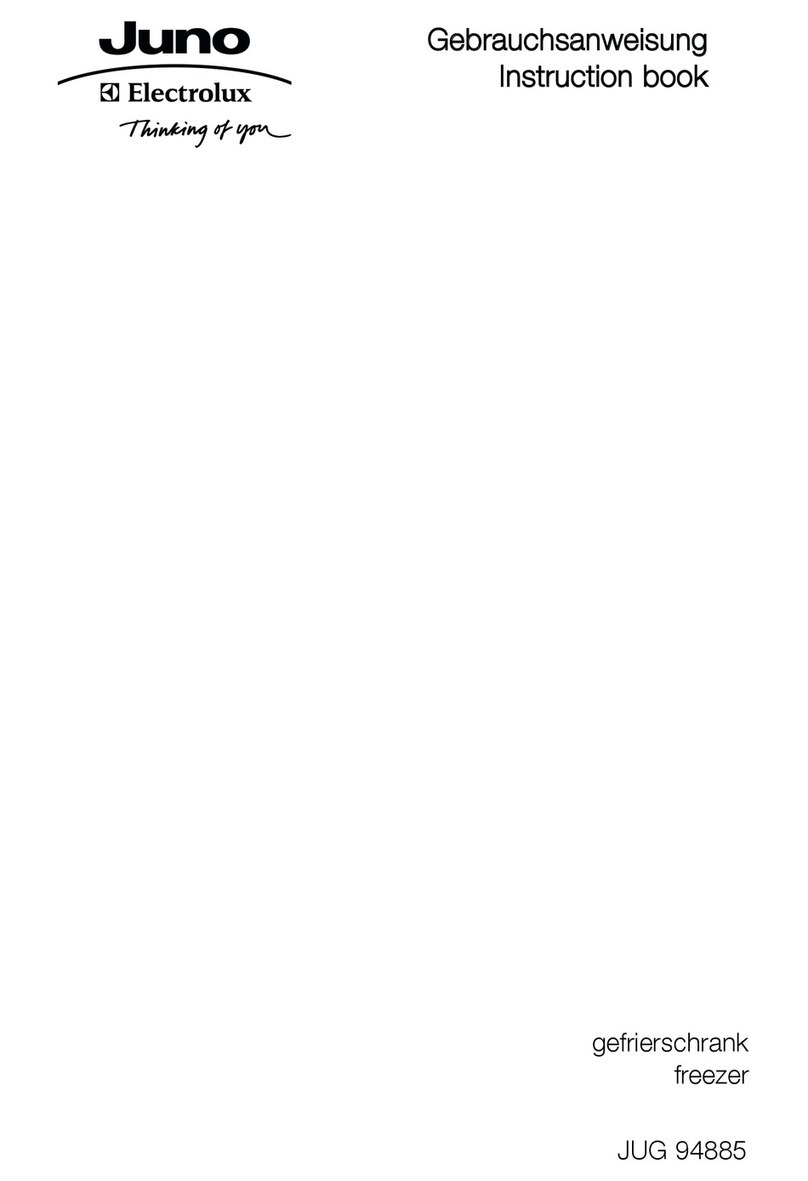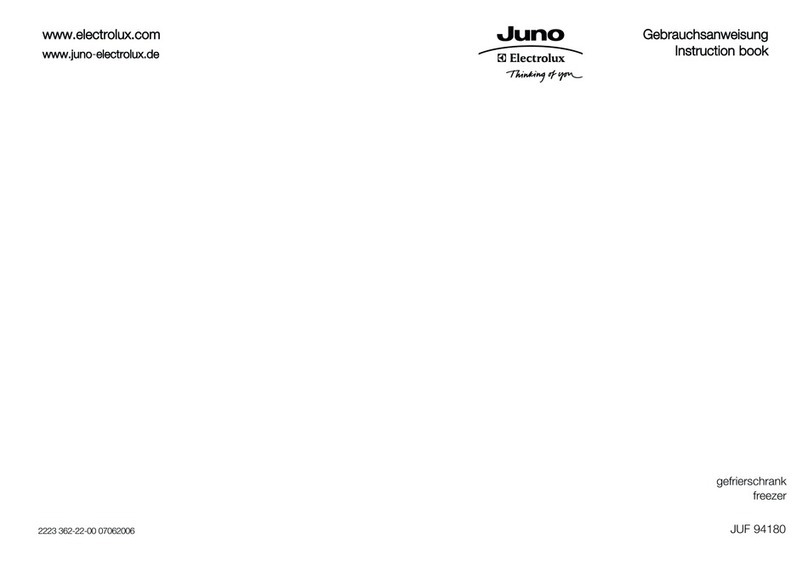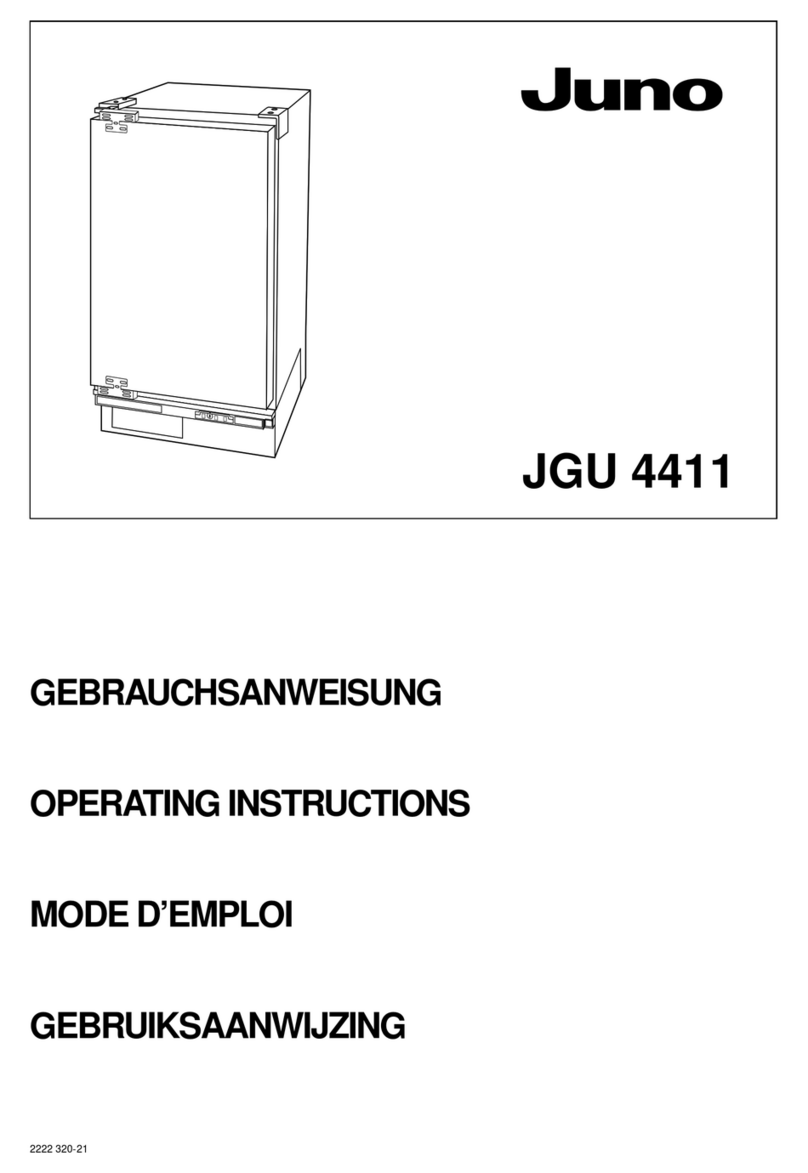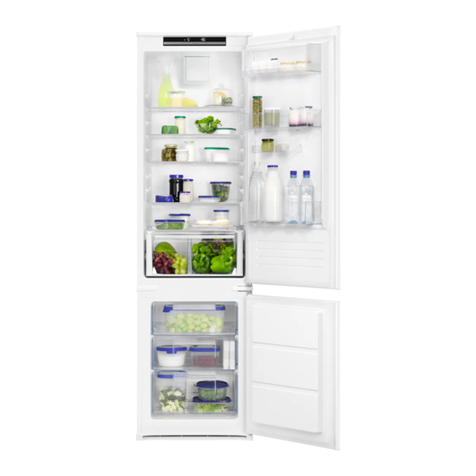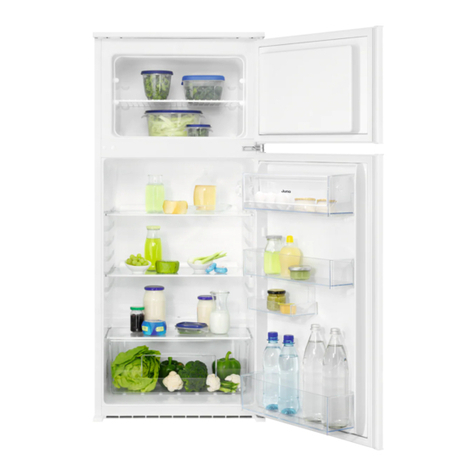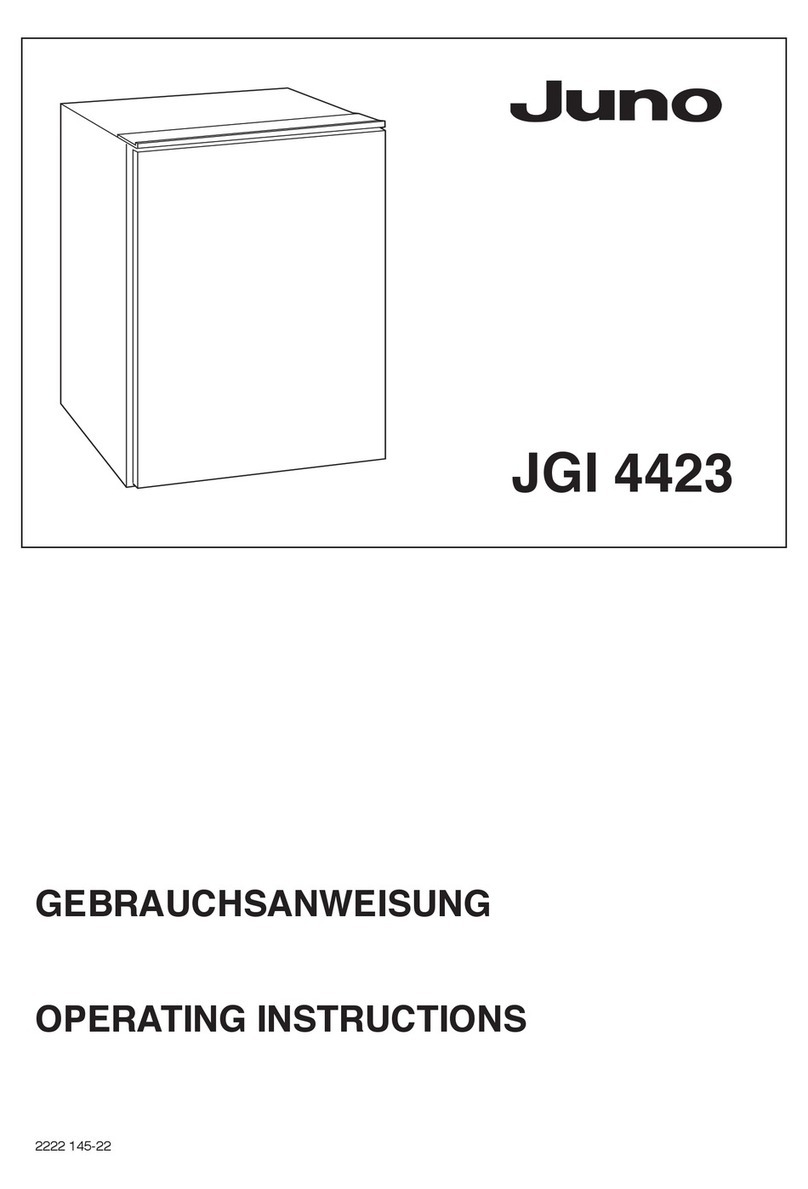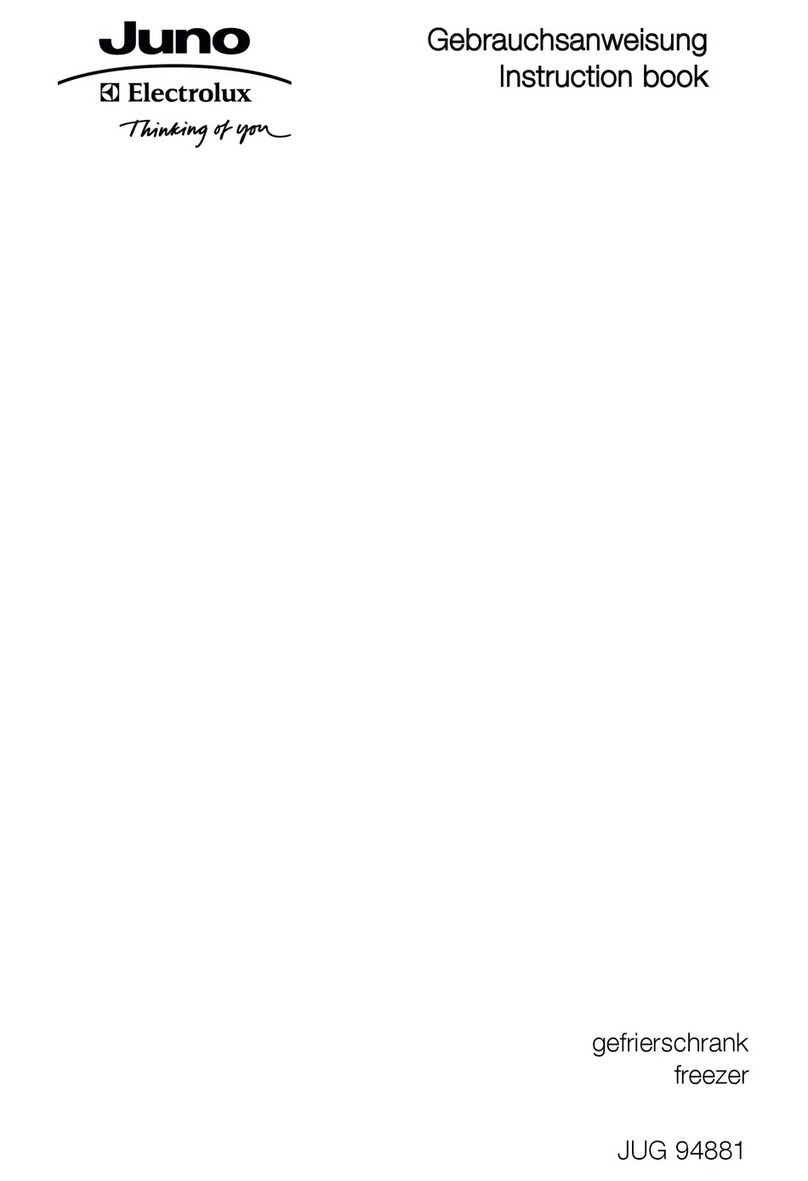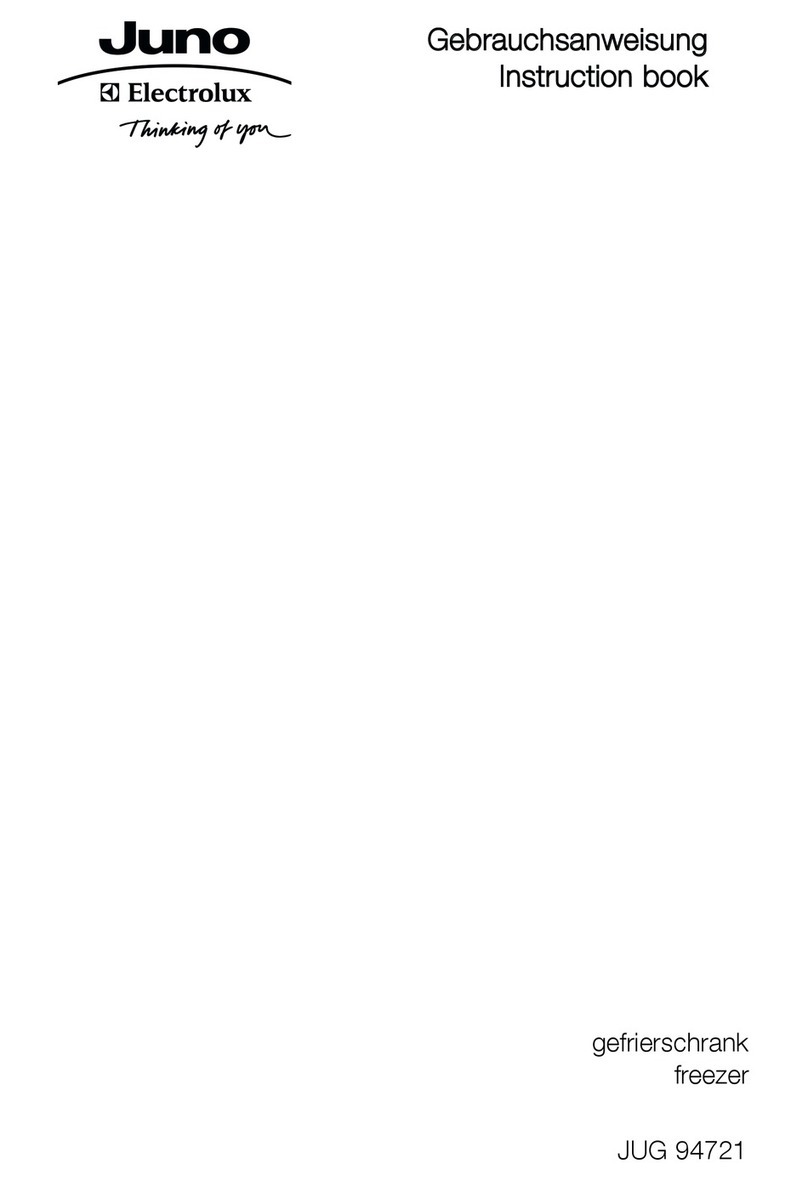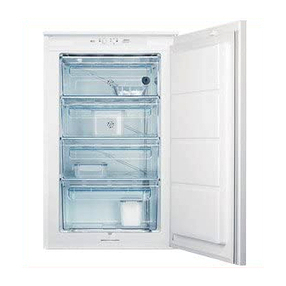WARNINGS
It is most important that this instruction book
should be retained with the appliance for future
reference. Should the appliance be sold or trans-
ferred to another owner, or should you move house
and leave the appliance, always ensure that the
book is supplied with the appliance in order that
the new owner can be acquainted with the func-
tioning of the appliance and the relevant warnings.
These warnings are provided in the interest of
safety. You must read them carefully before
installing or using the appliance.
ªThis appliance is designed to be operated by
adults. Children should not be allowed to tamper
with the controls or play with the appliance.
ªAny electrical work required to install this appliance
should be carried out by a qualified electrician or
competent person.
ªThis appliance should be serviced by an authorized
Service Centre, and only genuine spare parts
should be used.
ªIt is dangerous to alter the specifications or modify
this appliance in any way.
ªCare must be taken to ensure that the appliance
does not stand on the electrical supply cable.
ªThe domestic refrigerators and freezers are designed
to be used specifically for the storage of edible food-
stuffs only.
ªFrozen food must not be re-frozen once it has been
thawed out.
ªManufacturers’ storage recommendations should
be strictly adhered to. Refer to relevant instructions.
ªDuring normal operation, the condenser and
compressor at the back of the appliance heat up
considerably. For safety reasons, minimum ventila-
tion must be as shown in the relevant Figure.
Attention: keep ventilation openings clear of
obstruction.
ªBefore any cleaning or maintenance work is carried
out, be sure to switch off and unplug the appliance.
ªIf the appliance is transported horizontally, it is
possible that the oil contained in the compressor
flows in the refrigerant circuit. It is advisable to wait
at least two hours before connecting the appliance
to allow the oil to flow back in the compressor.
ªThe inner lining of the appliance consists of chan-
nels through which the refrigerant passes. If these
should be punctured this would damage the appli-
ance beyond repair and cause food loss. DO NOT
USE SHARP INSTRUMENTS to scrape off frost or
ice. Frost may be removed by using the scraper
provided. Under no circumstances should solid ice
be forced off the liner. Solid ice should be allowed
to thaw when defrosting the appliance. See defrost
instructions.
ªDo not use a mechanical device or any artificial
means to speed up the thawing process other than
those recommended by the manufacturer.
ªDo not place carbonated or fizzy drinks in the
freezer as it creates pressure on the container,
which may cause it to explode, resulting in damage
to the appliance.
ªThis appliance is heavy. Care should be taken when
moving it.
ªIce lollies can cause frost burns if consumed
straight from the appliance.
ªThis appliance contains hydrocarbons in its cooling
unit; maintenance and recharging must therefore
only be carried out by authorized technicians.
ªNever use metal objects for cleaning your appliance
as it may get damaged.
ªUnder no circumstances should you attempt to
repair the appliance yourself. Repairs carried out by
inexperienced persons may cause injury or more
serious malfunctioning. Refer to your local Service
Centre, and always insist on genuine spare parts.
ªThis appliance does not contain gasses which
could damage the ozone layer, in either its
refrigerant circuit or insulation materials. The
appliance shall not be discarded together with
the urban refuse and rubbish. Avoid damaging
the cooling unit, especially at the rear near the
heat exchanger. Information on your local
disposal sites may be obtained from your
municipal authorities.
ªTake utmost care when handling your appliance
so as not to cause any damages to the cooling
unit with consequent possible fluid leakages.
ªThe appliance must not be located close to radi-
ators or gas cookers.
ªAvoid prolonged exposure of the appliance to
direct sunlight.
ªThere must be adequate ventilation round the
back of the appliance and any damage to the
refrigerant circuit must be avoided.
ªFor freezers only (except built-in models): an
ideal location is the cellar or basement.
ªDo not use other electrical appliances (such as
ice cream makers) inside of refrigerating appli-
ances, unless they are approved for this
purpose by the manufacturer.
